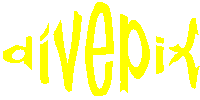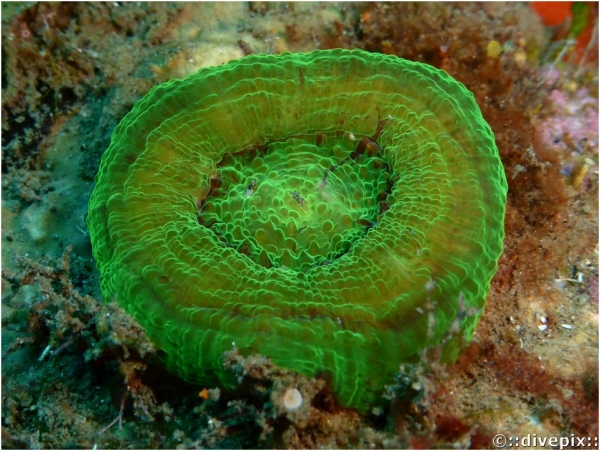| Aspect: |
The polyp ressembles a thick-edged tea cup saucer and can sport a range of colours. A close look reveals a rough surface though. This species is regarded as solitary although the other two visually similar varieties (Artichoke and Atlantic Mushroom, q.v.) also grow in an isolated manner (as opposed to colonies). The central mouth slit is often visible in the centre of the usually convex disc centre. Tentacles extend at night as exemplified by the picture of a pale green and brown specimen (positions 3 and 4 below) photographed on the Franjack wreck at night.
|
| Population: |
Common. |
| Notable feature: |
CAUTION: Although there are three distinct species of such small disc-shaped coral in the area - Artichoke Coral or Scolymia cubensis (seen here), Solitary Disc Coral or Scolymia wellsi (q.v.), and Atlantic Mushroom Coral or Scloymia lacera (q.v.) - which can only be differentiated with certainty by a microscopic observation of their corallite structure (and more particularly the shape of tip of their septa), the latter can be distinguished by its considerably rougher surfaces. Other visual cues that help telling an Artichoke Coral from a Solitary Disc Coral involve their central surfaces, which tend to be convex in the former and concave in the latter. |
| Environment: |
Usually found against rock or boulder walls.
|
| Behaviour: |
Tentacles only extend at night. |









